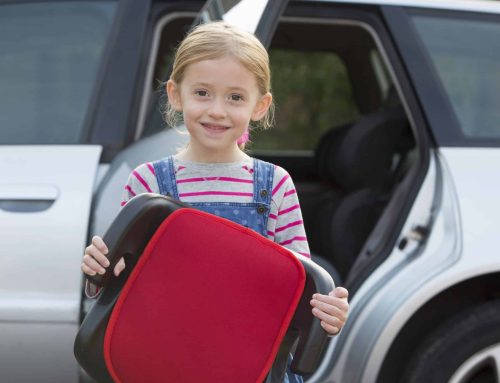Congratulations! You’ve completed the required hours of driving lessons, and now you’re ready to demonstrate your safe, law-abiding driving skills at the Motor Vehicle Division (MVD) and come away with an official driver license.
But with that excitement comes at least a touch of apprehension: What if you don’t pass? It happens, but with careful preparation, you’ll have the confidence and skills you need to be successful.
Here are our top tips for taking the Arizona road test.
Tip #1: Schedule your test in advance
It’s good to know that you can’t just walk into the MVD and take your test. You must schedule online at ServiceArizona.com. You can also take your test at one of the authorized third party driver license locations, which have extended weekday hours and are open on Saturdays.
Once you schedule your appointment, make sure to allow yourself adequate time to travel to the location, park, and get oriented in the MVD. Don’t be late for your test, or you’ll have to reschedule.
Tip #2: Bring all the required paperwork
When obtaining a driver license for the first time, you need to supply two forms of ID:
- One form must be a primary form of identification, such as a birth certificate or passport.
- The second form of ID needs to be their original social security card or W2, showing their social security number . For minors, parents can supply their own driver license or state ID to satisfy the second form of ID requirement.
- New drivers must also bring two pieces of government issued mail in their name, such as a the envelope their permit came in, pay check or a report card.
You must also bring the following:
- Your valid permit
- Written certification from your parent/guardian that you’ve completed the required 30 hours of supervised driving OR proof of completion of a state-approved drivers ed course
- Your completed driver license application, signed by a parent or legal guardian (if you’re under 18) and witnessed by an MVD agent or notary public
- Payment
Tip #3: Make sure your vehicle is test-ready
You will take the test in your own vehicle, which must be in good operating condition. The test administrator will give your vehicle a once-over and you’ll need to show that there are no major cracks in the windshield, that you have properly inflated tires, working windshield wipers, horn, doors, and seatbelts, as well as fully operational turn signals, brake lights, headlights, and taillights.
You’ll also need to supply proof of valid registration and current liability insurance provided in the United States.
If you’ll be taking the test using a car you don’t usually drive, make sure you’re familiar with that car: Do you know how to adjust the mirrors, start the car, change gears, and so on?
Tip #4: Practice, practice, practice
To be qualified for a driver license, the MVD requires you have completed at least 30 hours of supervised behind-the-wheel practice (20 hours of daytime driving and 10 hours of nighttime driving). Stop and Go Driving School recommends a minimum of 100 hours of training and practice to be safe and defensive behind the wheel.
In the days before you head to your test, practice all your newly acquired driving skills, especially those that are more difficult for you (parallel parking, anyone?). It’s a good idea to practice driving the roads near the MVD so you’re more familiar with the area.
Here are a few of the skills and maneuvers you’ll need to be ready to demonstrate during your test.
Hand signals: Showing you know how to properly use hand signals (which you legally must use if your turn signals or brake lights stop working) is one of the first things you’ll be asked to do during your test.
Parking: Before heading out to the road, you’ll take a parking test and will need to either successfully complete a three-point turn or parallel park, depending on where you take your test.
Holding the steering wheel properly: Observe the 9-and-3 rule and hold the steering wheel firmly at all times.
Adjusting your mirrors: Check your mirrors and make any adjustments before the test. Never adjust your mirrors during the test.
Driving the speed limit: Observe posted speed limit signs (including those in the MVD lot) and maintain a constant speed—no erratic or unnecessary speed changes.
Focus on driving: Don’t get distracted by what the test administrator is writing down and tune out other distractions. Use your scanning skills and be totally alert to your surroundings.
Know the signs: Be familiar with all the road signs and know what they require you to do.
Proper turning: Always use your turn signal, turning it on no less than 100 feet prior to making a turn, and know how to safely make and complete both right and left turns.
Checking blind spots: Know and use the proper procedure for checking your blind spots, even if you have driver assist technology in your car.
Backing up: You won’t be allowed to use a back-up camera during your test, so make sure you know how to safely back up without one.
Passing: Know all the steps for safely passing another vehicle.
Following at a safe distance: Know how to keep a three- to four-second following distance and observe it throughout your test.
Obeying traffic signals: Know when to proceed through a yellow light and when stop.
Stopping: You might be asked to make a sudden, but safe stop during your test. Come to a complete stop at a traffic light or stop sign.
Driving in construction zones or school zones: If these are on the test route, you’ll need to demonstrate safe driving through these zones. Pay extra attention to posted speed limits and follow all other signage, including temporary signage.
Driving in weather: If test day happens to be a stormy day, adjust your speed as necessary. Know how to use your windshield wipers, and be sure to turn them on and off when appropriate.
Tip #5: Be confident in your preparation
It’s natural to feel nervous, but try to relax, knowing that you’ve prepared and are ready. Focus on the road and on listening to your test administrator’s instructions. You’ve practiced and you know your stuff. You can do this!
Tip #6: Take your road test as part of your driver’s ed course
Want to eliminate the stress of scheduling your test with a stranger? By taking 10 or more hours of driving instruction, students have the option of evaluating with a school. This waives the MVD road test. Many students prefer this option because it allows them to take the test with the driving instructor they are already comfortable with, and in the same vehicle they’ve been driving in during their lessons.
If you’re interested in a driver’s ed course that includes the road test, take a look at our packages, and be sure to call or visit us with any questions.








